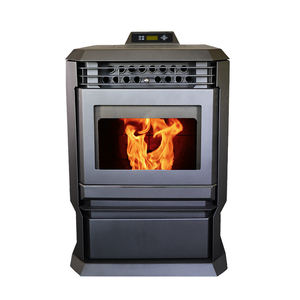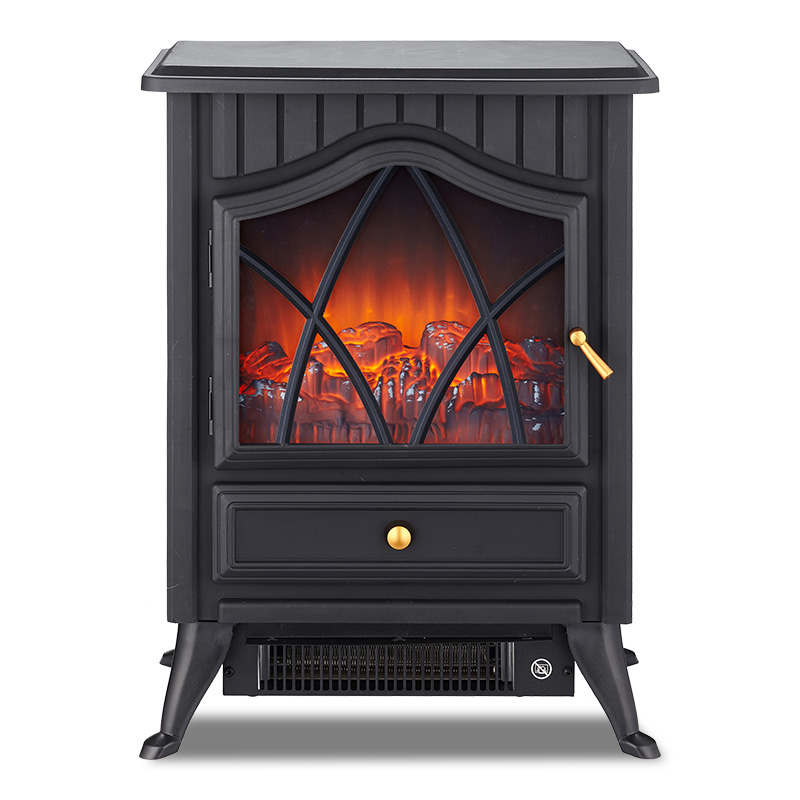How to Build a DIY Electric Fireplace at Home in 2025

Imagine transforming your living room with a modern DIY fireplace that combines style and practicality. Building a DIY electric fireplace isn’t just a fun project—it’s a chance to create a cozy centerpiece for your home. Compared to buying a pre-made unit, this DIY project offers unique benefits:
Benefit | Description |
|---|---|
Safety | Electric fireplaces don’t use real flames, reducing fire risks and harmful emissions. |
Ease of installation | Most models are plug-and-play, making them perfect for a DIY tutorial. |
Cost | DIY electric fireplaces are budget-friendly compared to traditional options. |
With a little effort, you can build an electric fireplace that’s both functional and stunning. Whether you’re dreaming of a shiplap electric fireplace or a sleek electric fireplace built-in, this tutorial will guide you every step of the way.
Key Takeaways
Making your own electric fireplace saves money and adds style.
Pick a good spot by checking the room and outlets.
Get all tools and materials ready before you begin building.
Stay safe while installing to avoid fire risks at home.
Clean and check your fireplace often to keep it working well.
Planning Your DIY Electric Fireplace
Choosing the Location
Picking the right spot for your electric fireplace is the first step in your DIY project. Start by assessing your room’s layout. Measure the dimensions to ensure the fireplace fits perfectly without overwhelming the space. Next, check the location of electrical outlets. You’ll need one nearby to power the fireplace insert safely. Make sure the outlet can handle the fireplace’s power requirements.
Think about the overall style of your room. Does the location complement your decor? For example, a sleek electric fireplace built-in might look great in a modern living room, while a rustic design could suit a cozier space. Also, consider clearance. The fireplace needs enough space around it to prevent overheating or fire hazards.
Don’t place the fireplace too close to combustible materials.
Make sure the size of the fireplace matches your room’s scale.
Always follow local building codes for safety.
Measuring and Designing the Space
Accurate measurements are crucial for a successful build. Use a measuring tape to determine the height, width, and depth of the area where you’ll install the fireplace. Keep in mind that electric fireplaces come in various sizes. For example:
Model Name | Installation Type | Aesthetic Influence | |
|---|---|---|---|
Amantii Panorama 72-inch | 12 to 12.625 | Recessed | Blends with modern decor |
Remii DE | 12 | Recessed | Efficient heating in small spaces |
Design the fireplace surround to match your home’s style. Whether you’re going for a shiplap look or a minimalist design, make sure the materials fit your budget and aesthetic.
Gathering Tools and Materials
Before you start building, gather all the tools and materials you’ll need. Here’s a handy checklist:
Tools: Measuring tape, level, saw, drill, hammer, and screwdriver.
Materials: 2x4 lumber, drywall, screws, adhesive, and finishing materials like paint or tile.
Optional Add-ons: A mantel, shiplap, or stone for a custom look.
Using cost-effective materials like 2x4s and cement board can help you stay within budget. Once you have everything ready, you’re all set to begin your step-by-step tutorial to build an electric fireplace.
How to Build the Frame

Constructing the Base
The base is the foundation of your DIY electric fireplace, so it needs to be sturdy and level. Follow these step-by-step instructions to build an electric fireplace base:
Remove the baseboard where the fireplace will go using a crowbar or multitool.
Build a rectangular frame out of 2x4 lumber. Match the height and length of your desired hearth. Secure it to the wall with 3-inch screws.
Complete the 2x4 cube by attaching it to the wall brace.
Cover the frame with plywood. If you’re planning to add drawers, wrap only the sides and top. For a regular hearth, cover the entire structure.
Nail 1x3 pieces to the front edges for a polished finish.
This base will provide a solid platform for your electric fireplace insert and any additional features like a mantel or storage.
Framing the Structure
Once the base is ready, it’s time to frame the structure. This step ensures your fireplace is stable and ready for the insert. Here are some best practices:
Sketch a blueprint to visualize the design and ensure accurate measurements.
Measure and mark the wall for stud locations. This will help you anchor the frame securely.
Cut the lumber to size based on your blueprint.
Now, assemble the frame:
Build the structure near the installation site to avoid moving it through your home.
Use 3-1/2" construction screws to attach horizontal and vertical members, starting from the bottom.
Check that the frame is plumb and level. Use wood shims if needed.
Secure the frame to the floor and wall supports.
Confirm that the opening fits your electric fireplace insert perfectly.
Using durable materials like cement board or stone can make your DIY fireplace surround more robust and long-lasting.
Adding Support for the Electric Fireplace Insert
Your electric fireplace insert needs proper support to stay secure and function safely. Add horizontal braces within the frame to hold the insert in place. These braces should align with the mounting points of the insert. Double-check the measurements to ensure a snug fit.
If you’re creating a built-in electric fireplace, consider adding extra support for any decorative elements like a mantel or shelves. This will prevent sagging over time. Once the support is in place, your frame is ready for the next step: installing the fireplace insert.
How to Install the Fireplace Insert
Preparing the Insert
Before you install the fireplace insert, take a few steps to prepare it properly. Start by cleaning the area where the insert will go. Remove any old materials, debris, or ashes to create a smooth surface. Next, measure the height, width, and depth of the opening. This ensures the electric fireplace insert will fit snugly. If you’re working with an existing fireplace, check for a nearby electrical outlet. A 15 AMP, 120 Volt, 60 Hz circuit with a grounded outlet is ideal. For a clean look, you might want to work with an electrician to place a receptacle inside the opening.
Once the space is ready, unbox your electric fireplace insert. Inspect it for any damage or missing parts. This is also a good time to review the manufacturer’s instructions. They often include specific details that can make the installation process smoother.
Installing the Electric Fireplace Insert
Now it’s time to install the fireplace insert. Carefully slide the insert into the opening. Make sure it’s centered and level. If the insert has mounting brackets, secure them to the frame using screws. Double-check that the insert is stable and doesn’t wobble.
Plug the insert into the outlet. If the cord is visible, use cable management solutions to keep it tidy. Some inserts come with optional trim kits. These can help cover any gaps between the insert and the surrounding frame, giving your diy electric fireplace surround a polished look.
Testing and Troubleshooting
After installation, test the fireplace to ensure it’s working correctly. Turn on the power switch and check if the flames and heat settings function as expected. If the fireplace doesn’t turn on, verify that the outlet has power and the plug is secure. Also, inspect the thermostat. It should be set higher than the current room temperature.
If you encounter issues, consult the troubleshooting guide provided by the manufacturer. Common problems, like blocked air circulation or tripped fuses, are often easy to fix. For more complex issues, such as a faulty motherboard, contact customer support for assistance. Regular testing and maintenance will keep your built-in electric fireplace running smoothly and safely.
Finishing and Customizing Your Electric Fireplace

Adding Drywall or Panels
Once the frame is complete, it’s time to give your diy electric fireplace surround a polished look by adding drywall or panels. Start by cutting the drywall or paneling to fit the frame. Use a utility knife or saw for precise cuts. Attach the pieces securely with screws or adhesive, ensuring they sit flush against the frame. This step creates a smooth surface for the next stages of customization.
If you want a more decorative finish, consider using panels with unique textures or patterns. For example, shiplap panels can add a rustic charm, while sleek, modern panels work well for contemporary designs. Always double-check the alignment to avoid uneven edges. This attention to detail will make your diy fireplace surround look professional and cohesive.
Tip: Use cement board instead of drywall if you plan to add heavy materials like stone or tile later. It provides better support and durability.
Painting and Decorating
Now comes the fun part—painting and decorating your custom electric fireplace! Choose colors that complement your home’s style. Here are some popular trends for 2025:
Bold blues and moody navies for a sophisticated touch.
Luxurious reds and burgundy shades to add warmth.
Soft neutrals like earthy browns or serene blues for a calming vibe.
Minimalist designs with clean lines are perfect for modern spaces, while maximalist styles let you play with bold colors and patterns. If you’re feeling adventurous, add a statement surround using unique materials like reclaimed wood or metallic accents. These small touches can transform your diy electric fireplace into a true focal point.
Pro Tip: Use heat-resistant paint to ensure safety and longevity. It’s especially important if your fireplace generates heat.
Installing a Mantel
A mantel adds character and functionality to your fireplace. To install one, follow these steps:
Build the center section around the electric fireplace insert.
Add supporting pieces to hold the mantel securely.
Create "L" braces to set the depth and ensure stability.
Position the mantel carefully, ensuring it aligns with the overall design. Secure it with screws or brackets, and double-check that it’s level. A mantel not only enhances the look of your custom electric fireplace but also provides space for decorations like candles, picture frames, or seasonal decor.
Safety Note: Follow safety guidelines when installing the mantel. Ensure it’s securely attached to prevent accidents.
By finishing and customizing your diy electric fireplace, you’ll create a stunning centerpiece that reflects your personal style while enhancing your home’s ambiance.
Safety Tips and Maintenance
Ensuring Safe Installation
When you install your electric fireplace, following safety guidelines is crucial to protect your home and loved ones. Start by checking the outlet where you’ll plug in the fireplace. Make sure it’s in good condition and can handle the power requirements. If you’re unsure, consult an electrician. It’s also a good idea to use a separate electrical circuit for the fireplace to avoid overloading your system.
Keep the area around the fireplace clear of flammable materials. Items like curtains, furniture, or decorations should stay at least three feet away. Never place anything on top of the unit, as the heat it radiates could create a fire hazard. For added safety, ensure the fireplace is UL-certified. This certification guarantees the unit meets strict safety standards.
Tip: Plug the fireplace into a GFCI outlet. This type of outlet protects against electrical shocks, especially in areas prone to moisture.
Avoid running wires under carpets or furniture. This can cause overheating and increase the risk of fire. If you’re new to wiring or electrical work, don’t hesitate to get professional help. A safe installation ensures your DIY electric fireplace operates smoothly and securely.
Regular Maintenance and Inspections
Maintaining your electric fireplace is simple but essential for its longevity. Start by inspecting the power cord regularly. Look for signs of wear or damage, and replace it immediately if needed. Test the outlet to ensure it’s functioning properly and avoid overloading circuits.
Clean the fireplace unit often to keep it looking and working its best. Dust the vents and fans to ensure proper ventilation. This prevents overheating and keeps the heating element efficient. If your fireplace uses light bulbs or LEDs for the flame effect, replace them as soon as they burn out.
Pro Tip: Schedule an annual professional inspection. A technician can check for hidden issues and ensure everything is in top shape.
By following these maintenance practices, you’ll enjoy a safe and cozy fireplace for years to come. Plus, regular care helps your DIY project stay as stunning as the day you finished it.
Building a diy electric fireplace is a fantastic way to upgrade your home without breaking the bank. By taking on this project yourself, you can save money on labor costs and avoid professional service fees. Plus, creating a detailed budget and finding affordable materials lets you manage expenses while achieving a stunning result.
Safety is key, so make sure to follow local building codes and use heat-resistant materials. If electrical work feels overwhelming, hiring a licensed electrician can ensure everything is done right. Once complete, you’ll have a custom fireplace that adds warmth, style, and personality to your space.
Why wait? Start your diy project today and transform your home with a cozy, electric centerpiece that’s uniquely yours!
FAQ
What are the benefits of building a DIY electric fireplace?
Creating your own electric fireplace lets you customize the design to fit your space and style. It’s cost-effective and gives you a sense of accomplishment. Plus, you can control the materials and features, ensuring it meets your needs perfectly.
Can I install an electric fireplace without professional help?
Yes, you can! Most electric fireplaces are designed for easy installation. Follow the manufacturer’s instructions and this guide carefully. If you’re unsure about electrical work, consult an electrician for safety.
How much does it cost to build a DIY electric fireplace?
The cost depends on the materials and features you choose. On average, you can expect to spend between $200 and $800. Using budget-friendly materials like 2x4 lumber and basic inserts can help you save money.
Do electric fireplaces require ventilation?
No, electric fireplaces don’t need ventilation. They don’t produce smoke or harmful emissions, making them a safe and clean option for your home. Just ensure proper clearance around the unit to prevent overheating.
How do I maintain my electric fireplace?
Regularly dust the vents and fans to keep the unit running efficiently. Inspect the power cord for damage and replace burned-out bulbs or LEDs promptly. Scheduling an annual inspection ensures everything stays in top shape.
See Also
Step-by-Step Guide to Crafting Your Own Pizza Oven
Innovative Indoor Pizza Oven Trends to Watch in 2024
Unique Outdoor Fireplace Designs Featuring Pizza Ovens